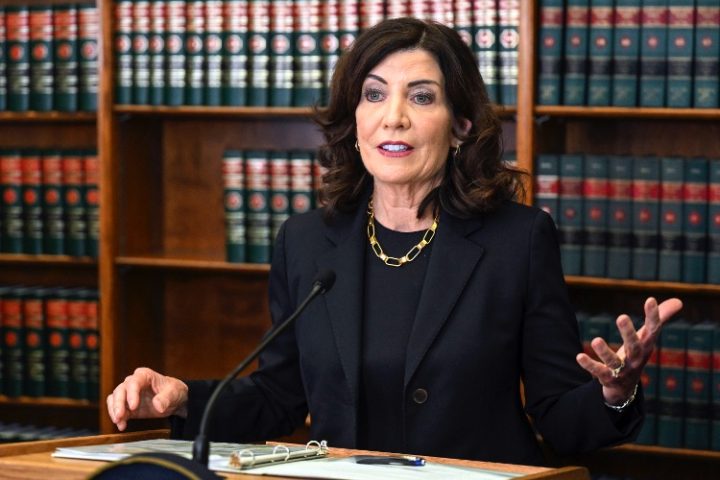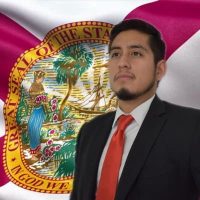
New York Democrats are at last learning that the realities of an open border and mass migration are very different from the utopian platitudes they’ve been parroting for years. While much of the tense dialogue in the New York migrant crisis has been between city and state officials against the federal government, now city and state are being pitted against one another on the issue of relocating the vast numbers of migrants that have exceeded lodging and work capacities in the Big Apple.
As Politico reports, New York Governor Kathy Hochul has refused to grant New York City Mayor Eric Adams’ request to use the suburbs as a relief valve for the excess of migrants in the city — putting the two Democrats at odds with one another. And even if Hochul does give in, local leaders in those suburban communities have already vowed to resist the move in court.
Nassau County Executive Bruce Blakeman, a Republican, summed up the sentiment of many suburban residents, telling Politico, “We are not a sanctuary county. Don’t make your problem our problem.”
Adams and other NYC Democrats argue that upstate and suburban counties would provide a much-needed relief for the city as it grapples with more than 100,000 migrants, which have stretched its resources beyond capacity.
But for Hochul, keeping the crisis limited to New York City at least contains it to one area, rather than allowing it to spread to the rest of the state — which would be the case if she agreed to convert motels and hotels outside the city into shelters.
Per Politico:
Many of the areas of the state that do not want migrants sent by New York City include Long Island and the Hudson Valley — two regions that will be key battlegrounds for House control in 2024. Adams in recent days has made direct pleas to Hochul to issue an emergency order to command counties on Long Island and in Upstate New York to shelter migrants sent by bus from the city.
Adams said Tuesday that Hochul’s approach is “wrong,” and called for more aggressive federal action. “Any plan that states that all migrants must stay in New York City, that’s a failed plan,” he said. “Any plan that does not include stopping the flow at the border, that’s a failed plan.”
That Adams is now mirroring the rhetoric of Republicans with his assertion that border security is an indispensable part of the solution shows the desperate situation he now faces.
But despite the insistence, Hochul refuses to cede ground. She maintains that a 1981 agreement that requires New York City to provide shelter to homeless people has no application to the rest of the state. This has resulted in a court case that could have a far-reaching effect on the current migration crisis, depending on how it is ultimately decided.
For the moment, Hochul has used her interpretation of this requirement to strike back at the city’s demands, arguing in a speech last week that the right-to-shelter case “is one of the reasons we cannot and will not force other parts of our state to shelter migrants, nor are we going to be asking these migrants to move to other parts of the state against their will.”
Several New York counties, particularly Republican-led ones, have put emergency orders in place barring the use of hotels or other facilities within their borders for the purpose of housing migrants.
Rockland County Executive Ed Day is another Republican official who vowed to sue over any gubernatorial order to force migrants into his community.
Not only are New York City and the state government sparring with each other over the issue, but both are at odds with the Biden administration. The White House this week shot back at jabs from New York State and New York City, which accuse the federal government of failing to adequately address the influx of migrants. In letters addressed to Adams and Hochul, Homeland Security Secretary Alejandro Mayorkas cited two dozen areas in which it says the city can improve its migrant operations to alleviate the crisis without the federal government’s help.
Last week, Hochul made a public address in which she declared that the crisis “originated with the federal government, and it must be resolved with the federal government.” Adams lays the blame on the Biden administration for failing to provide New York with sufficient money, and for being slow to grant work authorization for the migrants. According to the mayor, the $135 million he has received from the federal government is not nearly enough to cover New York’s many needs.
In Chicago, similarly, Democratic Mayor Brandon Johnson has called on the federal government to fast-track work permits for asylum-seekers, noting that the city’s migrant population has now exceeded 13,000. “Let me state this clearly: The city of Chicago cannot go on welcoming new arrivals safely and capably without significant support and immigration policy changes,” Johnson said during a news conference on Wednesday.
Perhaps the gravity of the situation will cause Democratic politicians and voters to rethink their enthusiasm to create “sanctuary cities.”




